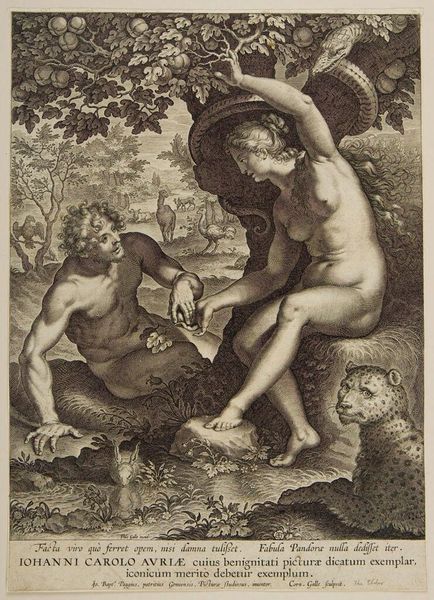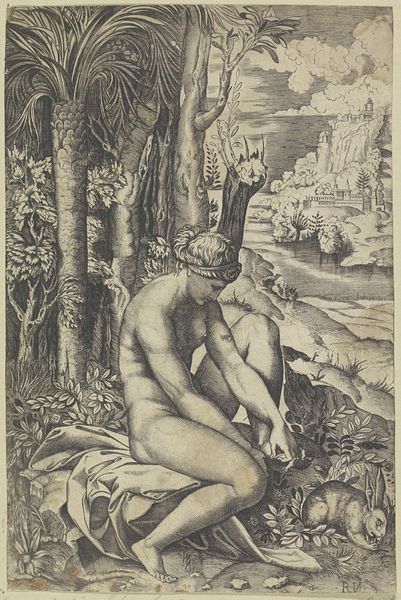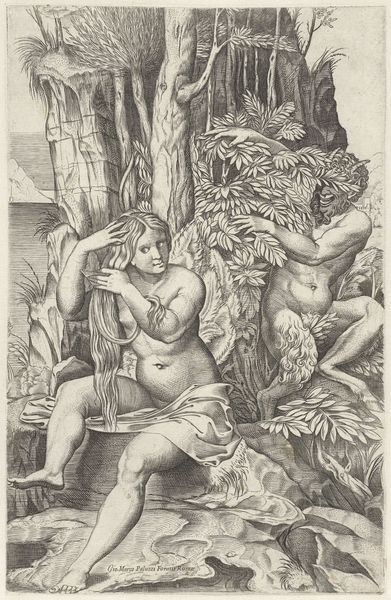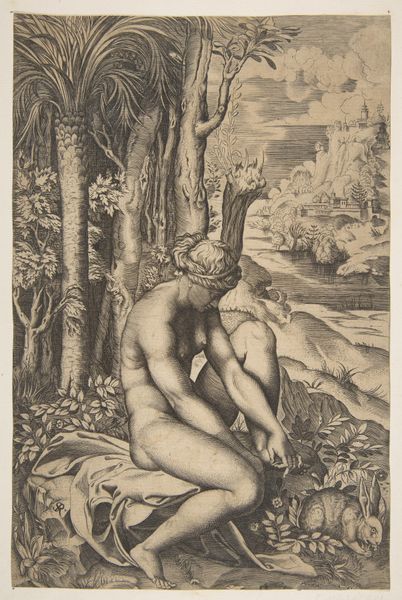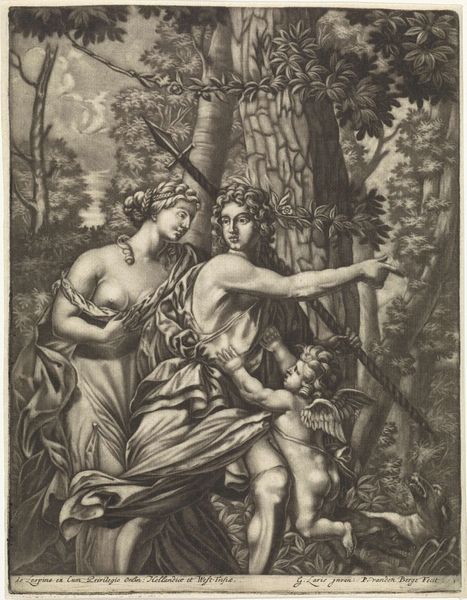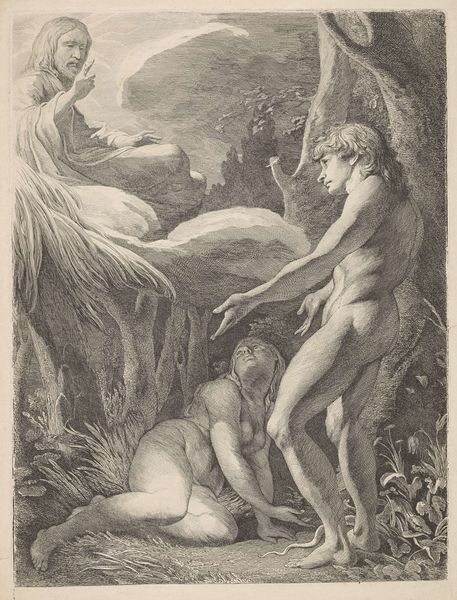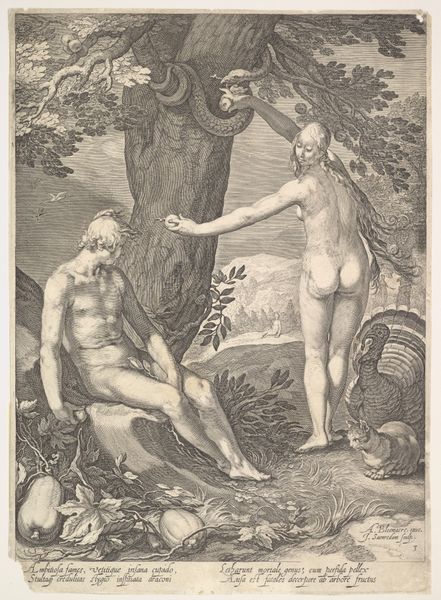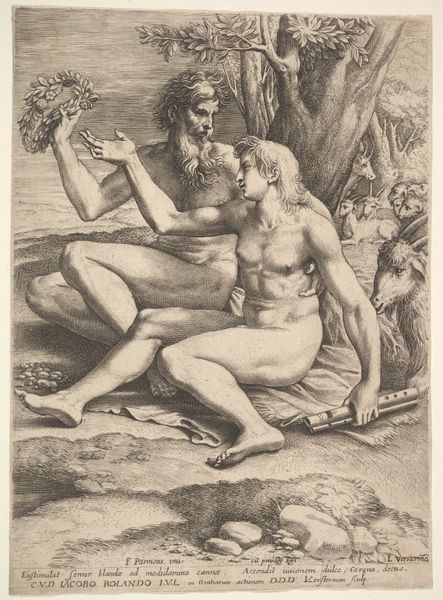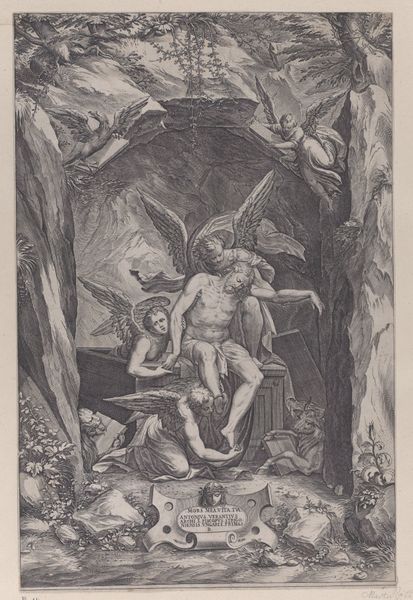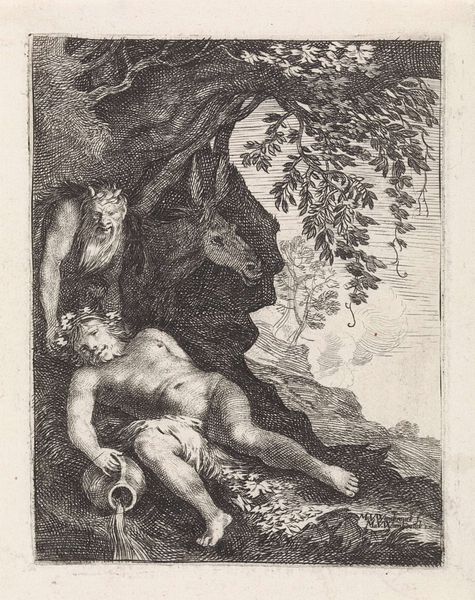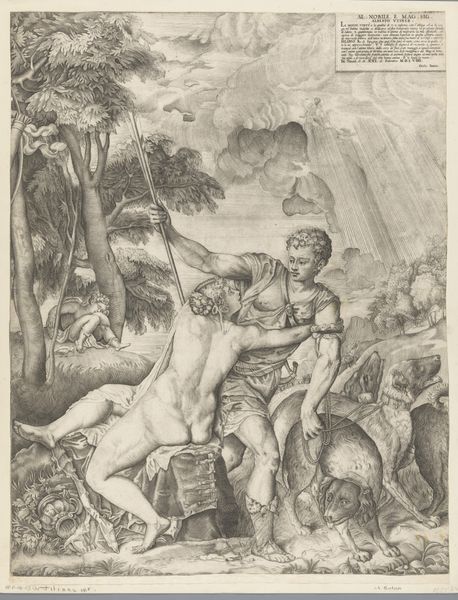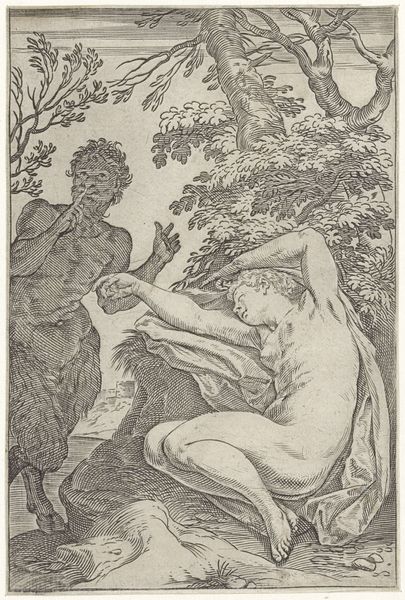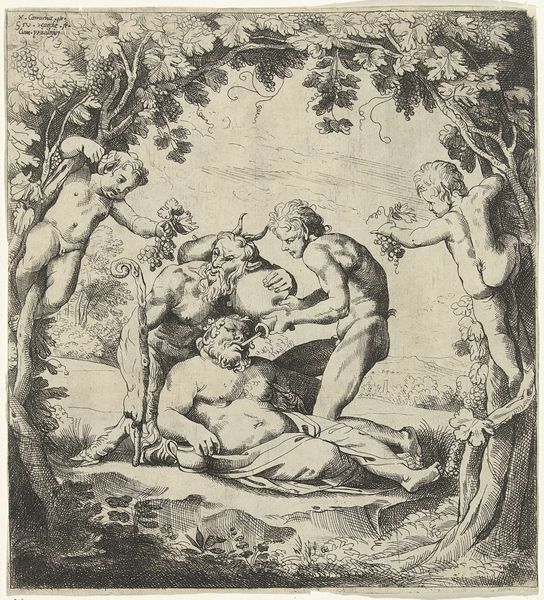
print, engraving
#
portrait
#
allegory
# print
#
old engraving style
#
landscape
#
figuration
#
form
#
portrait reference
#
line
#
history-painting
#
northern-renaissance
#
nude
#
engraving
Dimensions: height 363 mm, width 265 mm
Copyright: Rijks Museum: Open Domain
Curator: This engraving, titled "Adam and Eve," was crafted between 1586 and 1612, attributed to Cornelis Galle I. You can find it here at the Rijksmuseum. Editor: Immediately, what strikes me is how crowded it is! Adam and Eve are centrally placed, of course, but surrounded by animals and lush foliage…it feels almost claustrophobic despite being ostensibly set in paradise. Curator: Galle was quite meticulous, almost scientific, in depicting nature; the landscape acts not only as backdrop, but as active participant in the drama unfolding. Consider how the line work contributes to a sense of density, particularly around the serpent entwined in the tree. Editor: And what a serpent! Coiled dramatically, nearly regal, with a decidedly knowing glint in its eye. But look at Eve, her hand outstretched. She doesn't appear frightened or seduced, just…curious. What do you make of the subtle blurring around their forms? It softens the outlines, almost as if they're not quite real, or already fading from grace. Curator: A printing technique designed to guide the eye. But look closer: each element serves to emphasize the binary oppositions—knowledge versus innocence, human versus animal, paradise versus exile. Notice the rather imposing jaguar? An unusual and foreboding presence that adds to a symbolic interpretation of the piece, almost like an announcement that innocence will be short-lived. Editor: Exactly. While we're drawn to Adam and Eve, we cannot escape that looming feline presence. The contrast emphasizes this loss. There is the distinct feeling of being forced to leave the scene after the "forbidden" act, but not without feeling the urge to look over one's shoulder. In addition, I can´t help but wonder whether it´s meant as an invitation of an alternative world for these two innocent human beings. Curator: Yes, that feels right. So the narrative threads entwine, reflecting not just the moment of transgression but the complexities of its aftermath and, in essence, capturing the very essence of the human condition and, dare I say, human error!
Comments
No comments
Be the first to comment and join the conversation on the ultimate creative platform.
